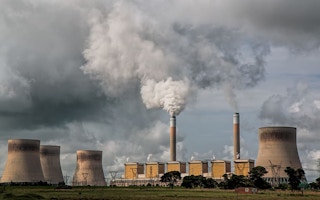One year after Covid-19 caused emissions to dip globally, the direction energy demand is now taking suggests that energy-related carbon dioxide emissions are headed for their second-biggest annual rise in history this year—and Asia is set to be behind the bulk of the increase.
To continue reading, subscribe to Eco‑Business.
There's something for everyone. We offer a range of subscription plans.
- Access our stories and receive our Insights Weekly newsletter with the free EB Member plan.
- Unlock unlimited access to our content and archive with EB Circle.
- Publish your content with EB Premium.
In its new Global Energy Review, the International Energy Agency (IEA) predicts that while the pandemic continues to throttle the world’s thirst for energy, stimulus packages and vaccine rollouts will push economic output 2 per cent above 2019 levels in 2021.
The jump in demand for goods and services will lead to a 4.6 per cent increase in global energy use, surpassing pre-pandemic levels and more than offsetting last year’s 4 per cent contraction.
The result, forecasts the Paris-based intergovernmental organisation, will be a lot more fossil fuel burning.
Triggered by an economic slowdown that left more than 114 million people without jobs, global emissions dropped 5.8 per cent in 2020, the largest reduction ever recorded.
But the expected rise in energy consumption is set to reverse most of this decline, pushing up energy-related emissions by almost 5 per cent, to only about 1 per cent below levels before the pandemic.
With almost three-quarters of the world’s planet-heating emissions coming from energy use, this bodes ill for the global climate challenge.
Coal returns
The study, the IEA’s annual flagship report, predicts that demand for coal—the dirtiest of the world’s fossil fuels—is set for a 4.5 per cent rise, bringing it above 2019 levels and close to its 2014 peak.
On clean power generation, the report states that renewables will continue on their steep upward trajectory following last year’s record growth. Renewables are forecast to account for more than half of the increase in global electricity supply in 2021, with solar and wind contributing two-thirds of the growth.
The share of renewables in electricity generation is projected to increase to almost 30 per cent this year, up from less than 27 per cent in 2019. Solar is taking the lead, while wind is on track to achieve its largest burst of growth to date.
Even so, as coal claws its way out of its biggest decline since World War II, renewables struggle to keep up: While advancing in all key sectors, clean energy sources are set to grow to a combined level that is 60 per cent below that of coal.
Fossil-fueled recovery
The IEA estimates that emerging markets and developing economies will be responsible for 70 per cent of the rebound in energy consumption this year.
Spurred by thriving industries and rising incomes, energy demand in these nations is on course to shoot 3.4 per cent above 2019 levels, while that of advanced economies could stay 3 per cent below pre-Covid levels.
80 per cent of the rise in coal will be concentrated in Asia. China—the world’s biggest polluter—may be behind half of the global rise in renewable electricity generation this year, but it alone is also projected to account for more than half of the growth in coal use.
China is the only major economy where coal demand increased in 2020. In December, the country burned more coal than ever before, and with stimulus measures supporting the production of steel, cement and other coal-intensive industrial products, coal use is set to keep soaring.
The world’s third-largest emitter, India, is forecast to see coal demand rise 9 per cent as its economy recovers its footing.
The power sector accounted for less than 50 per cent of the drop in coal-related emissions in 2020, but it is expected to be responsible for 80 per cent of the rebound, largely due to rapidly increasing coal-fired electricity generation in Asia.
Other fossil fuels too will pocket a portion of the expected uptick in energy demand. At more than 3 per cent, natural gas is headed for the biggest increase relative to 2019 levels, propelled by increasing demand in Asia, the Middle East, and Russia.
Following its price shock in 2020, oil is expected to see consumption levels rise 6.2 per cent, although it will remain below 2019 levels as second and even third waves of coronavirus infections keep airplanes grounded around the world.
But that’s assuming that transport demand does not bounce back more quickly. If it does, it could push up energy demand by an additional 1.5 per cent, to almost 2 per cent above 2019 levels, the IEA warns.
The new analysis comes on the heels of a climate summit hosted by United States President Joe Biden that saw nations like the US, Brazil, Canada, and Japan make new commitments to cut emissions and fight climate change. South Korea, one of the world’s top financiers of coal power, pledged to end public funding of such generation plants.
It also follows an analysis by the Carbon Tracker Initiative, a London-based non-profit, stating that solar and wind could push fossil fuels out of the power sector by the mid-2030s and out of total energy supply by 2050.








